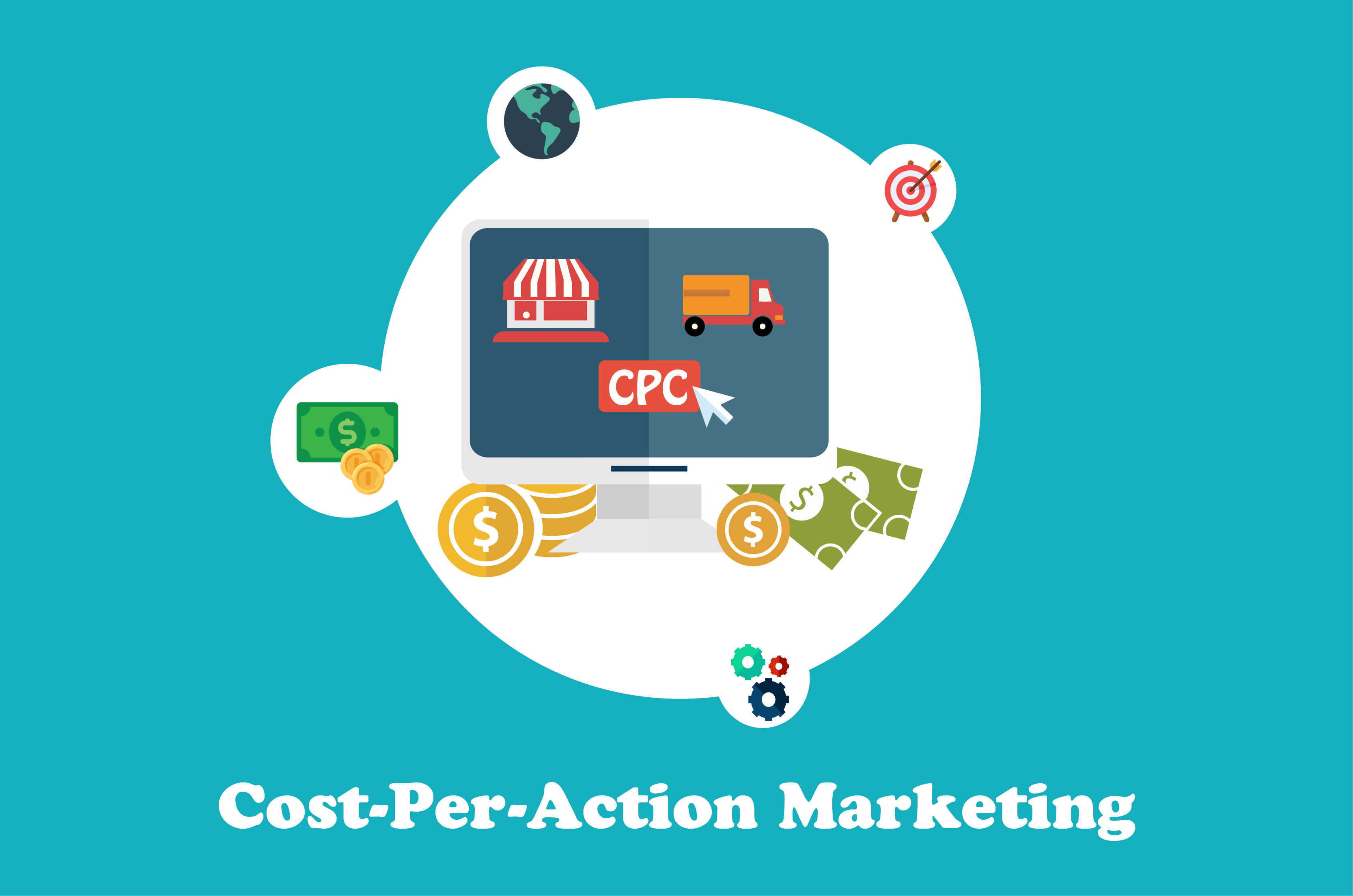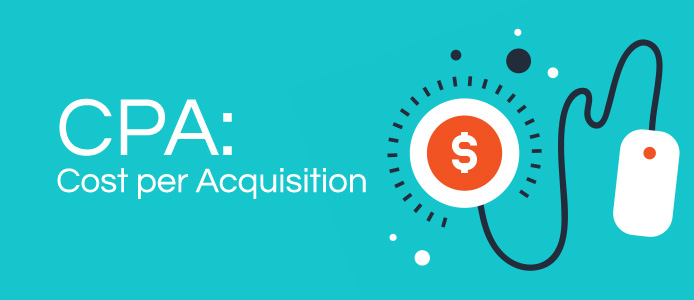What is Cost Per Acquisition (CPA)? How to optimize your CPA?
There are a few ways to implement online advertising campaigns. You can get ready to pay search engines or other Internet publishers hosting ads. Whenever one of your ads is clicked, the ad can be seen, or whenever the ad can prompt a more sales-related action.
The third option you can choose is to entail users to click on your ad as well as sign up for a free trial of an item, register for a free download, and purchase your items. Keep in mind that signups, along with registrations, can create company leads, while sales make immediate cash in your own pocket.
Besides those above methods, you are strongly recommended to use Cost Per Acquisition, which is considered one of the most crucial metrics that every marketer needs to know how to track and measure. CPA will give them the whole picture and an estimate of how much their new customers are spending on them. And then helps them decide if their own marketing strategies have to be revised carefully.
Unlike conversion rates, known as a useful indicator of success, CPA is also a financial metric that is widely used to measure the revenue effect of any marketing campaign.
In this tutorial, you will be shown the complete guide on Cost Per Acquisition, how to calculate it, and how to optimize your Cost Per Acquisition.
Recommend:
- How to Promote Shopify Store on Facebook
- Shopify Facebook Ads Guide
- Guide To Using Google Adwords
- How To Use Google Shopping
- How to Set Up Google Shopping for Shopify
What is Cost Per Acquisition (CPA)?
CPA standing for Cost Per Acquisition is known as a marketing metric that can measure the aggregation cost to acquire customers’ payment on a channel level or a campaign. Simply, CPA is an important measure of your marketing success and generally distinguished from the CAC (Cost of Acquiring Customer) by its own granular application.
The formula is shown below:
Total Campaign Cost / Conversions = CPA
Lots of marketing metrics always indicate your success, including conversion rates and visits. On the other hand, the CPA is also a financial metric that is used to measure the revenue effect of marketing campaigns. Equipped with average order value (AOV) as well as Customer Lifetime Value (CLV), an online business can make a decision on the acceptance CPA for eCommerce acquisition. While conversion rates are considered as the main indicator of success marketing, CPA gives the business perspective to estimate campaign success.
CPA is widely used in the paid marketing mediums below:
- PPC
- Affiliate
- Display
- Social Media
- Content marketing
In addition, CPA can be applied to emails, eCommerce SEO or other platforms without advertising the costs directly, but it still asks for overhead.

How do you calculate cost per acquisition?
In the paid acquisition market, clicks seem to be the holy grail. However, in case you think of it, clicks only inform you if visitors reach your content or not. They do not tell you whether they stay or not. In this case, how do you know that your content is engaging enough to convince your customers to stay and purchase your services or products?
The best way to measure your content’s converting abilities is the cost per acquisition. Then, in this part, you will be shown how to calculate cost per acquisition and how its bidding process works.
Most acquisition marketers would rather the CPA pricing model. This is because they are able to set their definition of each acquisition before they begin advertising and need to pay as their desired action or acquisition occurs.
In fact, the CPA auctions are not similar to your particular auction for the antiques. Advertising platforms such as Google would love to increase their level of the playing field as it comes to leverage the size of their own reach. Hence, instead of the fact that the highest bidder often wins the auction, the bidder with the highest Ad Ranks will always win.
AdRank’s formula is multiplying your maximum CPA bid with the quality score of your own ad that is measured by calculating your page’s relevance to user experience, click-through-rate, and the keyword. It means that organizations are unable to acquire the top ranking for keywords they wish since they have the largest ad budgets. As a result, their content needs to be engaging.
To calculate Cost Per Acquisition for your advertisement of the campaign’s cost, you had better take total advertising spend, then divide it by the quantity of acquisition created.
Let’s take some examples of CPA calculation:
For example, you are running a Facebook campaign for your shop that is selling bouquets, and you know your budget for that campaign is about USD500. After the campaign finishes, it brings you 25 sales. Hence, what is the CPA for your campaign? Here is the calculation:
USD500 cost of campaign/ 20 conversions = USD 25CPA. Then, in case you responded to USD25, you are totally correct.
Reading up to know, you might have an arising question. How do you know if this CPA is good or bad? In fact, CPA and CLV (Customer Lifetime Value) are connected closely. CLV represents the whole money a certain customer is about to spend over his lifetime relationship on your own site.
Here is another example of CPA calculation:
Imagine that you are the store owner of an eCommerce store called Mark’s shirts that sells men’s dress shirts. You run this campaign and spend USD1,000. And after this campaign, you already sell 10 shirts on your own site. So what is the CPA?
Here is the answer: USD 1,000 spent/ 10 sales = USD 100 CPA. For this campaign, it costs USD 1,00 on an average for conversion.

Why is Cost Per Acquisition important?
There is one thing that you cannot deny. In any kind of business, you cannot call yourself a good ad person if you do not know your number. After all, we are not a great marketer unless you track your numbers. More importantly, you will not be a top-notch marketer if you do not track the CPA.
CPA is an important element since it is considered as the quintessential metric for deciding the true return on investment. It is not a matter of how many clicks or eyeballs each campaign receives. If your campaign does not bring you any revenue, it is the failure.
Which factors determine the desired CPA?
Generally speaking, there remains no benchmark for a “good” CPA in eCommerce. Every online business is loaded with prices, margins, and operation expenses. One of the most vital factors in determining a desired CPA is that you have to understand those factors to allow businesses to calculate how much they can afford to be willing to pay for acquiring clients. Another element include:
-
Business stage: Are you at a point in which your profit margins are the first, second, or third priority? Are you in a developing stage in which your profits are willing to be sacrificed for your brand exposure? Defining eCommerce goals clearly, along with risk, plays an important role in growing benchmarks that everyone in the organization is happy with that.
-
Budget: Take note that a limited marketing budget for your own business can lead to conservation and spend. With reduced ad spend, you should concentrate on low-hanging fruit and high-converting-terms, along with brand queries. When the budget increases, your campaign can expend to have lower-converting terms and a higher CPA.
-
Advertising Medium: Wherever you opt for spending ad dollars is significantly influenced by the elements that are discussed above in PPCBusiness Stage. Affiliate and Content Marketing will have various expectations as well as different desired results. For instance, the content you have can properly convert less in the short-term period, but it can turn out to be a key driver of brand awareness.
-
How “Acquisition” is defined: While CPA is usually related to the price of acquiring paid customers, the metric is somehow used to the secondary campaigns like direct mail listings and newsletter signups. It is regarded as the best practice to apply CPA as of the overarching metric connecting the secondary conversions to the primary one, which is making a sale.
How to optimize your cost per acquisition?
Because your quality score, known as a metric measuring how relevant and positive of experience your content is providing, is one of the most influential determinants in protecting a top ad ranking. On the other hand, creating more conversions is regarded as the best way to get your cost per acquisition costs highly optimized.
As you sit down to write an ad and landing page copy, you had better write something to notice that it can attach the attention of a distracted millennial in front of the TV. As a result, what is the process of convincing your customers to remove a piece of pizza to click on your ad and convert on your own landing page? Let’s check out those following steps for crafting compelling ads as well as landing page copy.
Evoke curiosity in your audience
When it comes to online content marketing, people tend to be driven biologically in order to investigate the world outside rather than have to respond to it. If you can evoke curiosity in your customers, then they can feel very satisfied with your ads and click on them. Hence, you had better not display too much about your order, but enough to ensure that its benefits are highlighted in c convincing way.
Identify the purchase intention
By doing surveys, you are able to clarify the purchasing intention for multiple sources of traffic, then adjust your own marketing funds accordingly. Remember that two traffic sources can consist of similar conversion rates; however, it can bring you clients with various purchase intentions, along with retention rates. It actually relies on how loyal customers are and how effective the initial nudge is.

Get emotional with your content
As you might not know about, emotions can drive our own behavior; meanwhile, logic can justify our actions, say psychologists. In fact, marketing can confirm this theory as a human can associate similar personality traits with many brands as they are doing with a human. Selecting between the two alternatives is the same feeling you choose your best friends. People you decide to live your life will make you feel something different.
This is why pitching an item’s features is known as an attempt. Hence, your content is not only creative but also emotional, too.
Optimize your landing page
As landing pages have a positive influence on conversion and they are the initial thing your audience can see after they click on your ads. In order to measure the efficiency of a landing page, you can run A/B tests where you make changes to a single characteristic of the page.
For instance, you can drive half of your own traffic to a landing page, and the other half goes to the page with targeted offers and decide which will bring you the best outcomes. By performing this, you can know exactly what type of landing page provides you the most powerful conversion and aid you in reducing CPA in the long-term.
Personalization
Let’s apply dynamic text replacement to make sure the consistency between your landing pages and your ad’s promise. You are able to advertise for “the most comfortable chairs”. Your UVP can look for the most comfortable chairs. Personalized ads are vital; hence, you had better get started right now.
Retargeting
Retargeting or remarketing will aid you in reaching people bouncing from your site. When you can connect with promising leads, you can convert them into customers, hopefully. This will increase the conversion rate by using the techniques of retargeting, which aims at reducing your CPA.
For any eCommerce businesses, a good segment of bounced traffics will be represented by its users who have abandoned their shopping carts. Those users possess a powerful inclination to purchase something from you. And with the right offer, those users can be converted into customers.
Conclusion
Reading up to this part, you have gone through a complete instruction on Cost Per Acquisition. Cost Per Acquisition (CPA) is simply understood as a marketing metric that is used to measure the total expenses to acquire a paying customer for a marketing and campaign channel. Generally speaking, cost per acquisition is such an important measurement for the success of any marketer and a way for businesses to identify if their investment in a particular marketing channel is offering them a maximum ROI or not.
If you find this post helpful, let’s help us share on your social media. Any comments and questions can be sent back to us. We would love to hear more from you.
New Posts

How To Set Up Google Analytics 4 For Your BigCommerce Store






